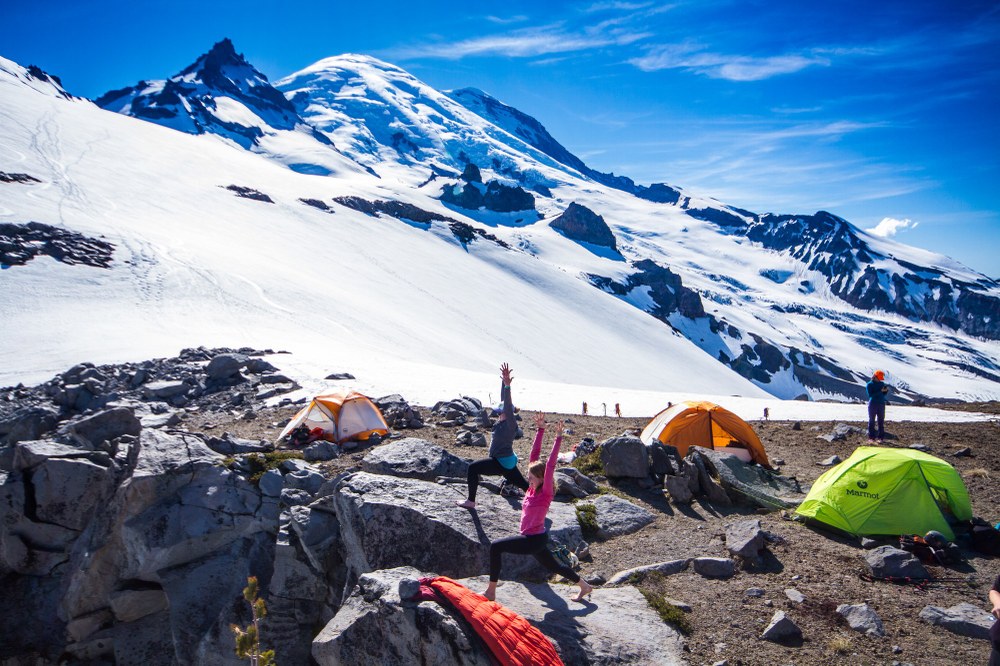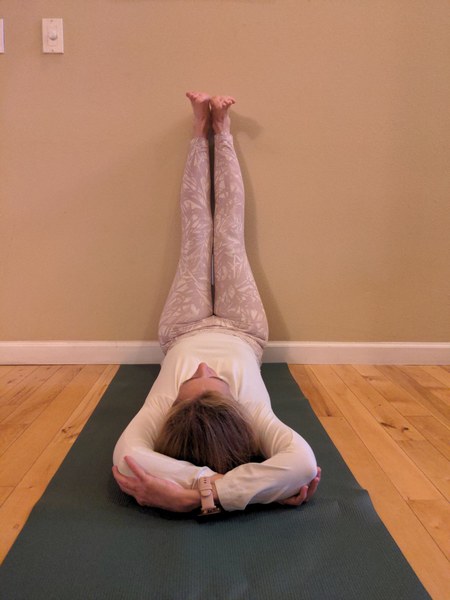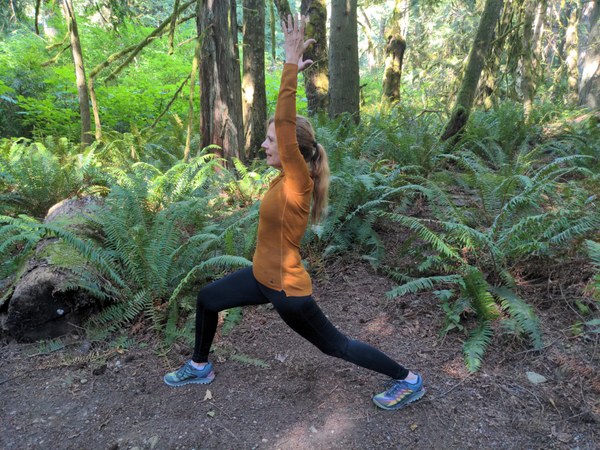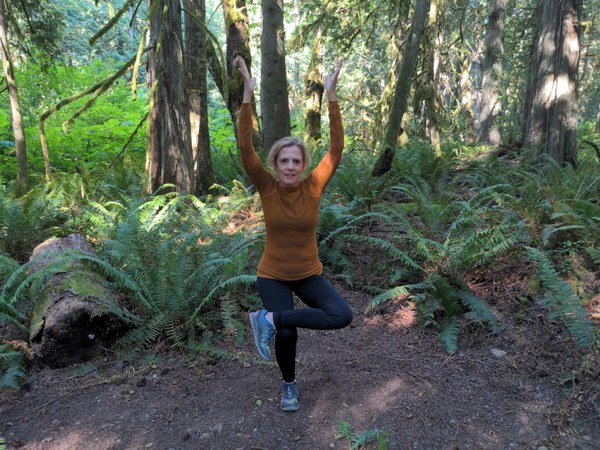
Before I took my first class back in 1999, I associated yoga with lithe-limbed contortionists standing on their heads, chanting for hours. But as a frenzied young woman with a busy and stressful career, I was looking for a way to bring tranquility into my life, and I’d heard that holding these painful-looking postures could alleviate stress and anxiety. I didn’t understand how something that looked so uncomfortable could help me achieve inner peace, but despite my misgivings I was willing to give yoga a try.
I’ll always remember how I felt when I left my first yoga session. Before the class, I was caught up in my ego, worried that I might not be able to attain some of the postures or that people in the class would think I was clumsy. As the class started and we moved into each posture, I kept looking around at the other students and comparing my posture to theirs to make sure mine weren’t worse than everyone else’s. But I soon realized that the other students weren’t in perfect versions of the postures either and, even more surprisingly, it didn’t seem to matter to them! They were simply accepting their practice for what it was and enjoying the experience. That’s when I realized that I was creating my own stress. I decided to stop worrying about what anyone else thought and just have fun. I walked out of that first yoga class with a sense of joyous enthusiasm I hadn’t felt since I was a child.
The benefits of yoga I kept coming back to yoga for that same sense of joy. I also started to notice other changes too. I was more aware of how I felt physically and mentally. I noticed my body’s alignment and which muscles felt tense or tired. I’m a runner, and as I started running farther, my yoga practice helped me increase my lung capacity and avoid common overuse injuries. When I started to feel pain in my knee while running, I began practicing yoga poses that included squats and lunges holding them long enough to feel my muscles engage to strengthen my quads, hamstrings, and glutes. This helped to stabilize my kneecaps and keep my pelvis level while running.
I soon realized that yoga benefits outdoorspeople in ways that many of us might not know. For instance, when backpacking or approaching a climb, you need strong legs and a strong core, particularly the glutes and hip flexors. These same areas are frequently overly tight and, therefore, prone to injury. Other common concerns include staying steady on rough terrain, managing the rounded shoulders that come from carrying a heavy pack, or soothing the delayed onset muscle soreness that most of us get after a long day outside. Fortunately, a consistent yoga practice can address many of these concerns. It will promote strength and increase the flexibility and mobility of muscles and joints. Yoga can also improve balance and proprioception (awareness of the position and movement of the body) to help you remain stable on rugged ground. Gentle, restorative postures can help relieve any aches or pains one might feel after a challenging day.
A practice for the outdoors
I recommend that active people practice yoga at least twice a week. There are so many different styles of yoga that finding a class to suit your needs may seem overwhelming. However, I have identified three different styles that work best for me at different stages of my day outdoors.
Immediately before outdoor recreation, I do a dynamic yoga practice to help me warm up and improve my proprioception so that I can stay steady on rocky trails. This usually includes flowing between balancing postures while integrating other movements that simulate running or hiking.
A few days before or after a long hike or trail run, I practice long holds in poses that target key muscle groups like the hamstrings, quads, and core so I have more strength to carry my backpack up steep slopes. I generally hold these poses for 30-60 seconds.
After a grueling day on the trails, I practice restorative postures to stretch overused muscles in the hips, glutes, and hamstrings. This relieves delayed onset muscle soreness and helps with recovery. I generally hold these poses for at least one minute and up to 20 minutes.
I also use my yoga practice to be more aware and present during outdoor activities. Rather than focusing on how many miles I should go or the pace I want to hit, I pay attention to my breath, how my body feels and moves, the sunlight shining through the trees, and the subtle sounds around me. I invite you to try the yoga postures below so that you can gain the strength, flexibility, and sense of tranquility that will enhance your outdoor adventures.
Legs up the wall
 All yoga poses of Lori Heath, courtesy of Lori Heath.
All yoga poses of Lori Heath, courtesy of Lori Heath.
Recommended for: Aiding your recovery after a long day on the trail
- Sit with one hip against a wall and your knees bent.
- Swing your buttocks toward the wall as you lie flat on your back, straighten your legs, and rest your heels against the wall. You will likely start to feel a stretch in your hamstrings. You can adjust the intensity of the hamstring stretch by moving your buttocks closer (more intense) or further (less intense) from the wall.
- Place your arms in a comfortable position. I like to lift mine over my head, bend my elbows, and hold alternate elbows to help stretch my shoulders and open my chest.
- Let your whole body relax. Try to hold the pose for 5-20 Minutes
High lunge (warrior 1)

Recommended for: Strengthening your quads, hip flexors, and core so that you can build the strength you need to traverse steep terrain. This posture also stretches tight quads and calves to help reduce the risk of overuse injuries.
- From a standing position, take a big step forward with your right foot. If you feel unsteady or if you can’t keep both hips facing forward, then step the right foot out a bit to widen your stance.
- While keeping your left leg straight, begin to bend the right knee until you feel the muscles in your right hamstring engage. Increase the bend in your right knee for more intensity, but don’t go beyond a 90-degree angle because that may put too much tension on the right knee.
- Lift your arms over your head to engage your core.
- If you feel steady and stable, you may want to lift your left heel off the floor. This will require more balance and stretch the hip flexors on the left side.
- Hold for 30-60 seconds, then repeat on the other side.
Standing half chair

Recommended for: Improving balance and proprioception for more stability on uneven ground. It also builds strength in the core and standing leg, and stretches the hips.
- Stand with your feet together. Bend your knees and lower your hips toward the ground until you feel the muscles in your thighs engage. Increase the knee bend for a more intense posture.
- Lift the right foot and place the right ankle over the left knee.
- Bring your hands to a prayer position in front of your chest or lift your arms over your head to engage your core and further challenge your balance.
- Fold your chest closer to your right leg until you feel a stretch in your right hip. The stretch will deepen as you bring your chest closer to your leg.
- If you feel steady here, you can increase the challenge by lifting the heel of your left foot and coming onto your tip toes.
- Hold for 30-60 seconds, then repeat on the other side.
This article originally appeared in our fall 2022 issue of Mountaineer magazine. To view the original article in magazine form and read more stories from our publication, visit our magazine archive.
 Lori Heath
Lori Heath